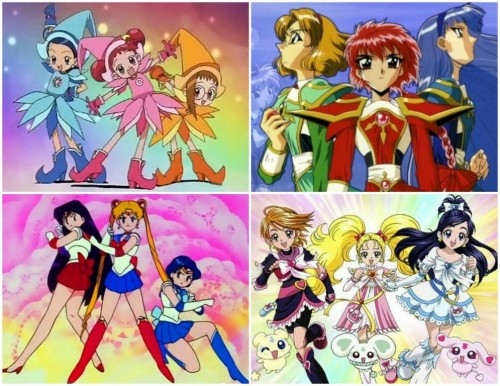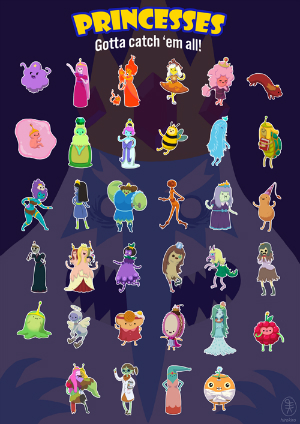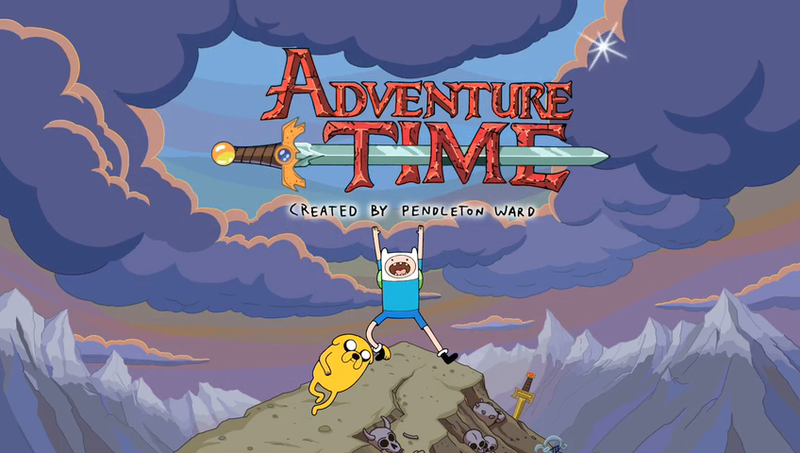The Feminism of Sailor Moon by Myrna Waldron
This has been a post I’ve been meaning to write for a long time. I’m an absolutely die-hard fan of Sailor Moon, and part of that is because it served as my childhood introduction to feminism. That might be a little bit hard to believe, considering the superheroines of the show are known for outfits not much more revealing than Wonder Woman’s. Silly outfits aside (you get used to them), this show was absolutely groundbreaking. Its protagonists are 10 realistically flawed, individual and talented teenage girls (and women) who, oh, you know. Save the world.
Why Jessie is the Worst Show on Disney Channel by Katherine Filaseta
For those who don’t know, this is a Disney Channel series about a girl from Texas who moves to New York City and becomes nanny for a Brangelina couple with four adopted children from around the world. If done well, it could allow for very educational programming for children about diversity and identity. Spoiler alert: it hasn’t been done well. It’s been done terribly.
Was Jem and the Holograms a Good Show for Little Girls? by Amanda Rodriguez
Though the show’s focus on romantic love, fashion, and female rivalry are of dubious value, there are definitely a lot of good things going on with Jem & the Holograms: the notion that fame and fortune should be used for philanthropic means, that female friendships can be strong and form an important network of support, and that a sense of community is crucial.
She-Ra: Kinda, Sorta Accidentally Feministy by Amanda Rodriguez
She-Ra: Princess of Power represents a network of powerful women who not only like each other, but they support each other, organize a rebellion against an oppressive patriarchal regime, and get shit done. The example this powerful group of women set for impressionable girls like myself is tremendous.
Why I Love Adventure Time by Myrna Waldron
Adventure Time is a Cartoon Network animated series that combines surrealistic comedy, fantasy and science-fiction. Based on a 2008 short by Pendleton Ward that went viral, it parodies the tropes, archetypes and cliches of fairy tales, video games and childhood action figure battles. The basic premise is about Finn, the last remaining human, and his best friend/adoptive brother Jake (a shape-shifting dog), going on your typical slay-the-monster-save-the-princess adventures. Now in its fourth season, it’s an enormous hit with all genders and age groups and shows no signs of slowing down. And let me tell you, as a feminist, why I am absolutely celebrating this show.
Anne of Green Gables: 20th Century Girl by Ren Jender
What makes good television programming “for children” is elusive. No demographic is unanimous in its tastes, but children differ from one another more than other groups: what fascinates a 4-year-old can bore an 11-year-old and vice versa. Add to this problem that most critics and programming creators are not children themselves, and we can see why most children’s programming is so terrible: because it, even more than other types of art, is based on, to quote Jane Wagner “a collective hunch.” Still, like a Supreme Court justice famously said about pornography, most of us, even those of us who don’t have children, can recognize excellent children’s programming when we see it, like the 80s made-for-television Anne of Green Gables, based on the book by Lucy Maud Montgomery.
Hey Arnold! A Bold Children’s Show by Nia McRae
Hey Arnold! taught life lessons without the viewer realizing it. An episode called “Stoop Kid” taught kids about the benefits of getting out of their comfort zone. The episode “Chocolate Boy” humorously analogized drug addiction. Arnold’s closeness with Gerald alongside Helga’s rapport with Phoebe highlighted the importance of friendship. The wrongness of first impressions was a reoccurring lesson; a dumb character would have moments of wisdom or a snobby character would have moments of vulnerability or a seemingly lucky rich kid would be shown as unhappy and/or overstressed. My favorite example of this message is in the episode “Ms. Perfect”, which introduced the character of Lila. Her popularity caused female students to envy her at first. But once they learned about Lila’s troubled life, the girls apologized and accepted her.
Gravity Falls: Manliness, Silliness, and a Whole Lot of Awesome by Max Thornton
Figuring out who you are in the face of societal pressures that buffet you every which way is the trial of growing up, and helping people to do that is one of feminism’s goals. It’s also at the heart of Gravity Falls, which helps cement this for me as an exciting show.
Celebrating Sesame Street by Leigh Kolb
So what does idealistic, feminist children’s television look like? It looks like Sesame Street, which over the course of its 45-year run has won more than 120 Emmy Awards. Sesame Street‘s frank and honest treatment of race, women’s rights, adoption, breastfeeding, death, childbirth, incarceration, divorce, HIV, health, bilingualism, and poverty throughout the years has added a dimension of social understanding to a show that also deals with teaching children their ABC’s and 123’s.
Adventure Time – Why Lumpy Space Princess is Important by Gaayathri Nair
LSP’s character design can barely be called feminine in the ways that we as a society code things feminine. This is especially true if you compare her to other female characters on Adventure Time such as Flame Princess and Princess Bubblegum. Her gender markers are the fact that her name is Lumpy Space Princess, the fact that she is pink, and that her speech takes on the patterns and vernacular of a valley girl although her actual voice is low and not immediately parse-able as feminine. The other main gender marker of LSP is the fact that she is into traditionally feminine things such as shopping and make up.
Steven Universe: A Superhero Team We Can Believe In by Megan Wright
Steven Universe embraces non-traditional families. Steven is a perfectly happy kid, who is raised by three women who love him. The Gems are wonderful guardians for Steven, acting as mothers, sisters, and leaders to him. Even though the Gems and Steven don’t always see eye to eye, they always try to step beyond their comfort zones for one another. The Gems may not understand the concept of video games, but if Steven wants to go to an arcade, then they’ll go. If Steven wants to throw them several birthdays for the thousands of ones they haven’t celebrated, they’ll let him dress like a clown and play party games with them, because even though they don’t understand it, it clearly means a lot to Steven.
Friendship Is More Than Magic: Feminism and Relationships in Puella Magi Madoka Magica by Kathryn Diaz
Imagine a world where young girls are trapped in a system that sees them as commodities. Imagine that any girl could be tricked into giving herself up to a life that is by all appearances filled with magic, beauty, excitement, and good, but exists to feed off the energy of their spirit. The girls are purposely pushed to their limits. When they have become too cynical or burdened, the system condemns them and sends in younger counterparts to pick them off. Imagine that these girls are pitted against each other, that once they have been lured in with heroic, fairy tale trappings, they are encouraged to turn around and use the power that they should be grateful for to use and destroy each other. At the top of this system sits a small white creature. He just can’t understand why girls get so upset when they learn the facts of life they signed up for.
…..That wasn’t very hard to imagine after all, was it?
The Magic Garden: Female Leaders In Children’s Television by Hayley Krischer
With their soft voices and pigtails Paula and Carole had a purpose: they created a serene little oasis while sitting on swings and singing, calling kids to “come and see our garden grow.” In The Magic Garden, there was a garden of make-believe where the “magic tree grows lollypop sticks.” Paula picked on her guitar and Carole encouraged you to stamp your feet or clap your hands on the “pop” during “Pop Goes the Weasel” without sounding like a droning fire alarm. Watching an episode of The Magic Garden was like going to a music class—the women pushed kids to sing faster and faster with the speed of the music, harmonizing and smiling, their easy melody a break of sorts to all of the outside noise.
Better Than Two: Female Power Trios in Children’s TV by Emanuela Betti
Power Trios in children’s TV, like duos, are still composed of oversimplified types and characters, yet they also suggest that femininity is not so black and white. Three character ensembles introduce characters types than are on a greyer scale than the polar-extremes of the Light/Dark Feminine trope. In the case of female Power Trios, the formula consists of three characters that respectively represent beauty, brains, and strength. Characters representing beauty are usually ditzy and childish, but they are also sensitive and the mediators (so if they happen to be “dumb” they’re at least depicted with a good heart); characters representing brains are sometimes the group leaders, but also rational without being distant or cold; finally, characters representing strength are usually impulsive and hot-headed, but their rash tendencies are balanced out with a loyal nature.
The Imaginary World of Mona the Vampire by Elizabeth Kiy
The series chronicled the adventures of Mona Parker, a young girl who enjoys dressing up like a vampire and sees saving her town from monsters as her mission in life. The stories are Buffy-lite: a giant bug substitute teacher, a robot babysitter, doppelgängers, a computer virus with mind-control powers, and new cafeteria cooks who aim to poison the school with salmonella. Though the show often pulls out from Mona’s fantasies to reveal the reality of the situation, Mona’s fights against the forces of darkness, usually end up somehow solving the crime or prank, exposing a conspiracy or locating the lost item anyway.
Exploring Imagination and Feminine Effacement in Cartoon Network’s Foster’s Home for Imaginary Friends by Jenny Lapekas
Why examine this offbeat show through a feminist or ethical lens? Because Foster’s Home for Imaginary Friends (Craig McCracken, 2004-2009) is wildly inventive and subversive. Its plot, which explains that children’s imaginary friends must eventually go live at Madame Foster’s zany orphanage after he or she has outgrown their friend, insists that a child’s imagination has the power to make something real, whether adults believe it or not. At this home, young children are welcome to come and “adopt” one of the friends who is housed there. In this way, the friends are concepts that are “recycled” in order to accommodate children as they grow up.
Adventure Time vs Regular Show by Amanda Lyons
There is one thing that, for me, gives Adventure Time a bit of an edge over Regular Show, and it’s been compounded after sitting through a two-hour back-to-back marathon of both shows over the weekend. It boils down to this: while both cartoons are awesome, Regular Show is pretty much a bro-zone while Adventure Time has a bit more room for the ladies.
Pepper Ann: Pepper Ann Much Too Cool Not To Be On DVD: A Letter to Disney by Janyce Denise Glasper
Behind black rounded glasses is Pepper Ann–a puffy red haired chick wearing eccentric style complete with black and white sneakers. An overall normal girl living in a normal world. In the town of Hazelnut, this humorous hip nerd lit up our shared television screen over vast bowls of high sugared cereal bowls. Like my sister, tomboy Pepper Ann played video games, adored roller blades, and sports while Pepper Ann’s precocious best friend Nicky loved books and had an indie spirit vibe like me. Wide range of diverse characters included Pepper Ann and Nicky’s other bff Hawaiian Milo, a rotund Swiss boy, typical popular blond chicks, and African American twins. There seemed to be a treat for everyone.
Pokemon: Escapist Fantasy for the Budding Feminist Child by Nia McRae
Should a writer depict a world that mirrors reality and show the problems within it or should s/he depict the ideal world we want to live in? Pokemon leans more to the latter. Pokemon, just like Star Trek, depicts a world that’s egalitarian or at the very least, very close to it. It’s a world where gender, race, and sexual orientation appear to be irrelevant. As a kid, I couldn’t articulate very well why I loved Pokemon so much but now I can. My joy was due to many things in the show; the adventures which encouraged my love of travel, the fun and catchy songs and most notably, the strong presence of dynamic, ambitious, and fun female characters.













